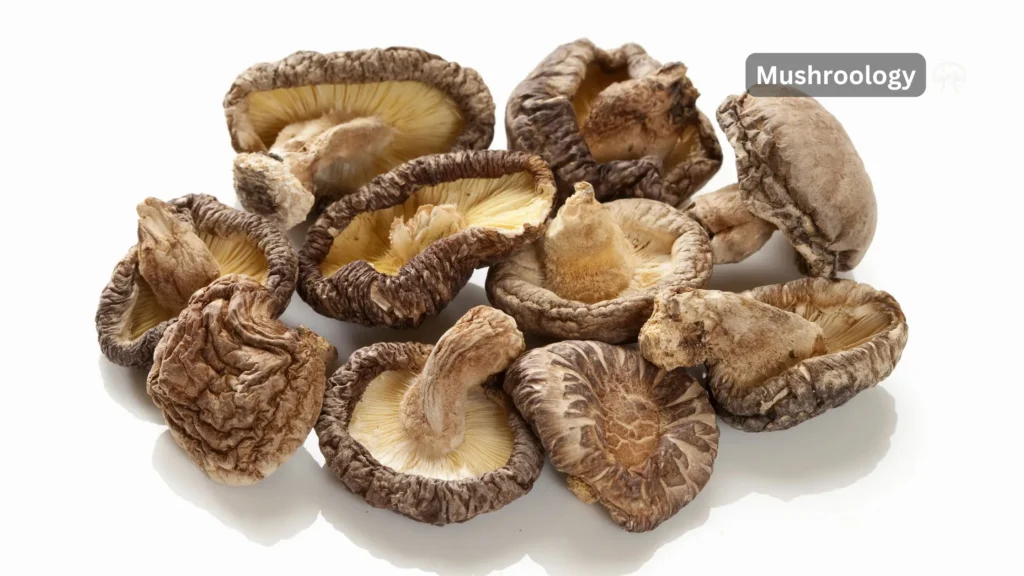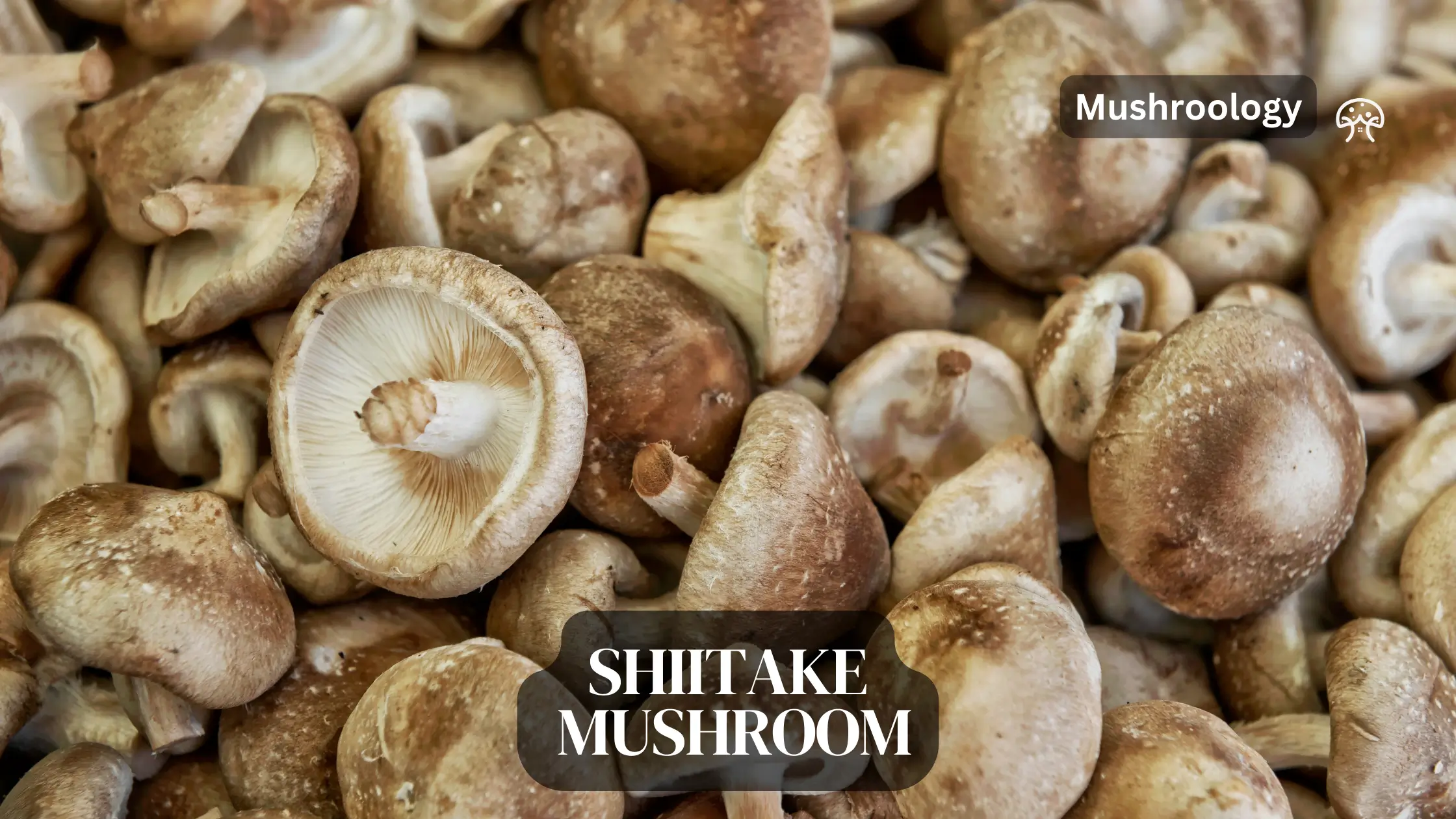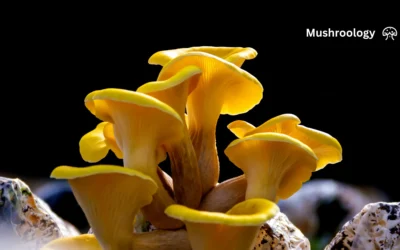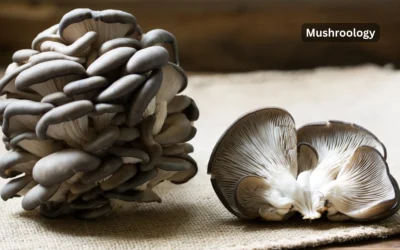Shiitake mushrooms (Lentinula edodes) have gained immense popularity among home gardeners for their delicious umami flavor and impressive health benefits. As someone who has successfully grown shiitake mushrooms in my own backyard for years, I can tell you that there’s something truly magical about harvesting your own homegrown mushrooms for the first time.
Best of all, growing shiitake mushrooms at home can be a sustainable, rewarding, and surprisingly accessible addition to your gardening repertoire—even if you have limited space. In this comprehensive guide, I’ll walk you through everything you need to know for successfully growing shiitake mushrooms at home.
Table of Contents
Quick start guide for beginners
If you’re eager to get started right away, here’s the condensed process:
- Choose your method: Logs (longer-lasting but slower) or sawdust blocks (faster results)
- For log method: Obtain freshly cut hardwood logs, drill holes, insert spawn plugs, seal with wax
- For sawdust blocks: Purchase pre-made blocks or create your own with hardwood sawdust and nutrients
- Incubate: Keep in shade with proper moisture (6-18 months for logs, 2-3 months for blocks)
- Initiate fruiting: Soak in cold water, provide humidity, indirect light, and fresh air
- Harvest: When caps are 70-90% open with edges still slightly curled
- Rest and repeat: Allow medium to recover before next fruiting cycle
Now let’s dive into the complete process with detailed instructions for each step.
Growing Shiitake mushrooms on logs vs. sawdust blocks
There are two primary methods for growing shiitake mushrooms at home, each with distinct advantages:
Log Method
This is the method I’ve used successfully in my backyard for years. Hardwood logs (oak, maple, beech) are inoculated with shiitake spawn and then naturally produce mushrooms after a colonization period. Logs typically measure 3-4 feet in length and 4-8 inches in diameter.
Pros of log method:
- Longer production (3-5 years)
- More natural process
- Lower maintenance once established
- More drought-resistant
- Authentic woodland flavor
Cons of log method:
- Slow initial growth (8-18 months)
- Requires outdoor space
- Weather-dependent
- Heavier to handle
Yield timeline: 8-18 months for first flush, then every 8-12 weeks for years
Best for: Hobbyists with outdoor space and patience
Sawdust block method

Sawdust mixed with supplemental nutrients is formed into blocks, sterilized, and then inoculated with shiitake spawn. This method produces results more quickly but requires more precise environmental control.
Pros of sawdust block method:
- Faster results (2-3 months)
- Can be grown indoors
- More controlled process
- Lighter to handle
- Higher initial yield
Cons of sawdust block method:
- Shorter production life (3-4 flushes)
- Requires sterile techniques
- More frequent maintenance
- More susceptible to contamination
Yield timeline: 2-3 months for first flush, then every 3-4 weeks for 3-4 flushes
Best for: Those wanting quicker results or limited outdoor space
Cost Comparison
| Expense | Log Method | Sawdust Block Method |
|---|---|---|
| Startup | $50-100 for 10 logs | $30-60 for 3 blocks |
| Spawn | $25-40 | $15-30 |
| Equipment | $30-50 | $20-100+ |
| Yield Value | $240-600 over lifetime | $60-120 over lifetime |
| ROI | 4-6x investment | 1.5-2x investment |
Step-by-step Shiitake mushroom growing process
Understanding the basic lifecycle of shiitake mushrooms is essential before diving into cultivation:
- Spawn colonization – Mycelium (the vegetative part of the fungus) grows throughout the wood medium
- Incubation – Mycelium fully colonizes the logs/blocks (6-12 months for logs, 2-3 months for blocks)
- Fruiting – Actual mushrooms form and develop
- Harvesting – Mushrooms are collected when caps are still slightly curled under
- Resting – The medium recovers before producing another flush of mushrooms
Popular Shiitake varieties for home cultivation
When selecting spawn, you’ll encounter different shiitake strains with varying characteristics:
- Donko (Thick Cap): Larger, meatier caps with excellent texture and flavor. These premium mushrooms are highly sought after by chefs and fetch higher prices at markets.
- Koshin (Thin Cap): Faster-growing with thinner caps. More productive but slightly less flavorful than Donko varieties.
- Wide-Range Strains: Some strains like “WR46” or “Night Velvet” are bred to fruit across a wider temperature range, making them more forgiving for beginners.
From my personal experience growing shiitake on logs, I’ve found that starting with a wide-range strain provides the most consistent results for beginners while still delivering excellent flavor.
Essential equipment for cultivating Shiitake mushrooms
For the Log Method:
- Chainsaw or bow saw for cutting logs
- Drill with 5/16″ or 8mm bit for inoculation holes
- Rubber or wooden mallet for inserting spawn plugs
- Wax applicator (dauber) and wax melter
- Food-grade wax (cheese wax or beeswax)
For the Sawdust Block Method:
- Pressure cooker (if making your own blocks)
- Heat-resistant grow bags with filter patches
- Impulse sealer for closing bags
- Spray bottle for maintaining humidity
- Food grade hydrogen peroxide (3%) for sanitizing
Inoculation process

For logs:
- Prepare materials and workspace: Choose a clean, shaded work area. Gather your logs, drill, plug spawn, and waxing supplies.
- Drill inoculation holes: Using a 5/16″ (8mm) drill bit, create holes about 1-1.5 inches deep in a diamond pattern around the log, spacing holes 6-8 inches apart in rows, with rows offset by 2-3 inches.
- Insert spawn plugs: Using a rubber mallet or hammer, tap plug spawn into each hole until it’s flush with the bark.
- Seal with wax: Melt food-grade wax (cheese wax or beeswax) and apply over each plug using a dauber or brush to prevent the spawn from drying out and protect it from contaminants.
- Label your logs: Use aluminum tags or weatherproof markers to record the shiitake strain and inoculation date on each log.
Pro Tip: I've found that inoculating 5-10 logs at once provides a manageable start for most hobbyists while ensuring a sustainable harvest rotation.
For sawdust blocks:
If you’re creating your own sawdust blocks rather than purchasing pre-made ones:
- Prepare and sterilize substrate: Mix hardwood sawdust with supplements and water to approximately 60% moisture content. Pack into heat-resistant grow bags with filter patches and sterilize in a pressure cooker at 15 PSI for 2.5 hours.
- Cool and inoculate: Allow bags to cool to room temperature. In a clean environment (ideally a still-air box or flow hood), add shiitake spawn to the bag at a rate of 5-10% of the substrate weight.
- Mix and incubate: Thoroughly mix the spawn throughout the substrate, seal the bag, and place in a warm (65-75°F), dark location for colonization.
Best wood types for Shiitake mushroom logs
The success of your shiitake mushroom venture largely depends on selecting the appropriate growing medium. For log cultivation, the type of wood dramatically affects your results. Here’s my ranked list based on personal success and general recommendations:
- Oak (White Oak, Red Oak) – The gold standard with excellent yields and longevity
- Sugar Maple – Excellent alternative to oak
- Beech – Very good yields with slightly faster colonization
- Hornbeam – Good yields with good resistance to competing fungi
- Ironwood – Dense wood that produces for longer periods
- Sweet Gum – Accessible option in many regions with good results
Avoid: Pine, cedar, or other softwoods that contain natural fungicides.
Log selection best practices
For optimal results, follow these guidelines when selecting logs:
- Timing: Harvest logs in late fall through early spring when trees are dormant and sap flow is minimal
- Source: Use logs from healthy, living trees (not deadwood)
- Size: Cut logs to manageable lengths (3-4 feet) for easier handling
- Diameter: Select logs 4-8 inches in diameter (smaller logs colonize faster, larger ones last longer)
- Age: Use logs from recently cut trees (ideally within 2-4 weeks of cutting)
Sawdust substrate formula
For the sawdust block method, the ideal substrate mixture contains:
- 80-85% hardwood sawdust (oak, maple, etc.)
- 15-20% supplemental nutrients (wheat bran, rice bran, or spent brewing grains)
- Hydrated to approximately 60% moisture content
For beginners, I recommend starting with pre-made sawdust spawn blocks from reputable suppliers like Field & Forest Products, North Spore, Mushroom Mountain, or Northwest Mycological Consultants.
Ideal temperature and conditions for growing Shiitake
Creating and maintaining the right environmental conditions is crucial for successful shiitake cultivation. Different stages of growth require different conditions.
Log Method Incubation
- Location: Choose a shaded, sheltered area under coniferous trees or 80% shade cloth
- Configuration: Stack logs in a crib stack (log cabin style) or lean them against a rack at a 30° angle to maximize air circulation
- Protection: Keep logs off bare soil using bricks, pallets, or gravel to prevent contamination from ground fungi
- Moisture: Maintain 35-45% moisture content within logs. In my experience, logs typically need watering during dry periods (when the bark feels completely dry to the touch)
- Temperature: Optimal colonization occurs between 65-75°F (18-24°C). Protect from temperature extremes
- Duration: Typically 6-18 months for full colonization, depending on log size, wood type, and temperature
Sawdust Block Incubation
- Location: A dark, clean area like a closet, basement, or dedicated grow tent
- Temperature: Maintain 70-75°F (21-24°C) for optimal colonization
- Humidity: Keep humidity at ambient levels (40-60%) during incubation
- Duration: Typically 4-8 weeks until blocks are fully colonized (completely white)
Fruiting conditions for both methods
Once your logs or blocks are fully colonized, you’ll need to initiate fruiting with these conditions:
- Temperature: 55-70°F (13-21°C) for fruiting (cooler than incubation temperatures)
- Humidity: 80-90% relative humidity during fruiting
- Light: Indirect natural light or 12 hours of low-intensity artificial light
- Air exchange: Fresh air prevents CO2 buildup and mushroom deformities
- Moisture: Regular misting to maintain surface moisture on logs/blocks
Initiating Fruiting
For Logs:
- Soak logs in cold water: Submerge fully colonized logs in cold, non-chlorinated water for 24-48 hours
- Physical shock: After soaking, lift logs and drop them on one end from a height of a few inches to provide physical shock
- Move to fruiting location: Place logs in a humid, shaded area with good air circulation
- Maintain moisture: Mist logs with water 1-2 times daily during dry periods
Within 7-14 days after shocking, you should see small “pins” (baby mushrooms) forming, which will develop into full-sized mushrooms over the next week.
For Sawdust Blocks:
- Initiate fruiting: Once blocks are fully colonized, remove them from the incubation area and expose them to light, fresh air, and cooler temperatures (55-65°F/13-18°C)
- Create fruiting chamber: Place blocks in a humidity tent or modified tub with 80-90% humidity
- Provide indirect light: Mushrooms need some light to develop properly – indirect natural light or 12 hours of low artificial light works well
- Air exchange: Ensure adequate fresh air exchange by venting the fruiting chamber several times daily
Seasonal growing calendar
| Season | Activities | Notes |
|---|---|---|
| Winter | Cut logs, prepare for spring inoculation | Dormant trees have ideal sap levels |
| Spring | Inoculate logs, maintain moisture | Primary natural fruiting season |
| Summer | Monitor for excessive drying, water as needed | Protect from extreme heat |
| Fall | Secondary natural fruiting season | Ideal time for forcing fruitings |
| Winter | Protect logs from freezing with mulch | Plan for next year’s expansion |
Harvesting and storing your homegrown Shiitake mushrooms
Knowing when and how to harvest your shiitake mushrooms is crucial for the best flavor, texture, and continued production.
When to harvest shiitake mushrooms
Optimal Harvest Timing: Harvest shiitake mushrooms when the caps are 70-90% open and still curled slightly at the edges. At this stage, the caps will be 2-4 inches in diameter with the best flavor and texture profile.
Signs of Harvest Readiness:
- Caps should be firm and slightly domed
- Gills should be white to cream-colored (not discolored)
- Stems should be firm without excessive dryness
Harvesting technique
The proper technique is to grasp the mushroom at the base of the stem and twist gently while pulling away from the log or block. This preserves the growing area for future flushes. For stubborn mushrooms, use a sharp knife to cut at the base of the stem.
Post-Harvest Maintenance
Rest Period: After a flush of mushrooms, logs or blocks need a rest period of 6-8 weeks (logs) or 2-3 weeks (blocks) to recover and build energy for the next fruiting cycle.
Forcing Next Flush:
- For Logs: Allow logs to rest for 6-8 weeks, soak logs in cold water for 24-48 hours, return to fruiting location
- For Blocks: Allow blocks to rest for 2-3 weeks, soak in cold water for 12-24 hours, return to fruiting chamber
Storage and preservation methods
Fresh Storage:
- Store unwashed mushrooms in a paper bag in the refrigerator
- Most shiitake will keep 7-14 days when properly stored
- For maximum freshness, avoid plastic bags which cause condensation
Preservation Methods:
- Drying: Slice mushrooms and dry at 110-120°F until crisp (excellent for reconstituting in soups)
- Freezing: Sauté lightly in butter before freezing for best texture
- Powder: Grind dried shiitake into powder for instant umami flavor boost
Health Benefits of Shiitake Mushrooms
Scientific research has demonstrated several potential health benefits of shiitake mushrooms:
- Immune System Support: Shiitake contains beta-glucans, particularly lentinan, which has been studied for its ability to stimulate the immune system and enhance the body’s defense against infections.
- Cardiovascular Health: Studies suggest that compounds in shiitake may help reduce LDL (bad) cholesterol levels and support healthy blood pressure.
- Antioxidant Properties: Shiitake mushrooms contain several antioxidant compounds that help combat oxidative stress and inflammation.
- Potential Anti-Cancer Effects: Research indicates that certain compounds in shiitake may have anti-cancer properties, though more human studies are needed.
Troubleshooting Common Shiitake Growing Problems
Even experienced growers encounter challenges. Here’s how to identify and address common problems:
Contamination Issues
Green Mold (Trichoderma)
- Symptoms: Green furry patches on logs or blocks
- Causes: Contaminated spawn, poor sterilization, or exposure to spores
- Solutions: Remove affected logs/blocks, increase air circulation, and isolate from healthy logs
Turkey Tail Fungus
- Symptoms: Thin, multi-colored brackets growing from log
- Causes: Competing wild fungus colonizing before shiitake is established
- Solutions: Prevent by inoculating fresh logs quickly, remove heavily affected logs
Bacteria
- Symptoms: Slimy, wet areas with unpleasant odor
- Causes: Excessive moisture, poor air circulation
- Solutions: Improve ventilation, reduce watering, remove severely affected portions
Growth and Fruiting Problems
Poor Mycelium Growth
- Symptoms: Slow or sparse white growth after inoculation
- Causes: Old logs, improper moisture, extreme temperatures
- Solutions: Maintain 35-45% moisture content, optimal temperature range (65-75°F for colonization)
Deformed Mushrooms
- Symptoms: Long stems, small caps, unusual shapes
- Causes: Insufficient light, excessive CO2, improper humidity
- Solutions: Provide indirect light, increase fresh air exchange, maintain 80-90% humidity during fruiting
No Fruiting After Soaking
- Symptoms: Logs fail to produce mushrooms after shocking
- Causes: Incomplete colonization, extreme temperatures, insufficient moisture
- Solutions: Allow longer colonization time, ensure logs are fully hydrated, protect from temperature extremes
Pest Management
Slugs and Snails
- Symptoms: Holes or tunnels in mushrooms, slime trails
- Solutions: Create physical barriers, use diatomaceous earth around logs, hand-pick at night
Fungus Gnats
- Symptoms: Small flying insects around growing area, tiny larvae in substrate
- Solutions: Yellow sticky traps, reduce moisture, beneficial nematodes for severe infestations
Squirrels and Chipmunks
- Symptoms: Chewed mushrooms, disturbed logs
- Solutions: Physical barriers like chicken wire cages around log stacks
Expanding Your Shiitake Mushroom Cultivation
Once you’ve mastered basic shiitake cultivation, there are numerous ways to expand your mushroom growing journey:
Scaling Up Production
Expanding Log Operations:
- Develop relationships with local arborists or forestry operations for regular wood supply
- Create a rotating inoculation schedule for year-round harvests
- Build dedicated fruiting structures like hoop houses or shade structures
Commercial Considerations:
- Research local regulations and requirements for selling mushrooms
- Explore direct-to-chef relationships with restaurants
- Consider value-added products like dried shiitake or mushroom seasonings
Exploring Additional Varieties
Other Log-Grown Mushrooms:
- Oyster mushrooms – Fast-growing and versatile
- Lion’s Mane – Unique texture and medicinal properties
- Reishi – Primarily grown for medicinal purposes
- Maitake (Hen of the Woods) – Delicious culinary mushroom
Companion Plants for Mushroom Areas: Create a mushroom-friendly ecosystem with:
- Ferns – Natural companions that thrive in similar conditions
- Hostas – Provide additional shade and humidity
- Wild ginger – Ground cover that helps retain moisture
Advanced Techniques to Explore
- Totem Stack Method: Stacking short log sections vertically to create “totems” that colonize quickly and produce abundantly.
- Raft Method: Partially burying logs horizontally to maintain moisture and extend production periods.
- Supplementation Techniques: Methods to increase yields through additional nutrients during the growing cycle.
- Strain Development: Experimenting with creating your own strains through stem butt propagation and spore collection.
Frequently Asked Questions
Q: How long does it take to grow shiitake mushrooms? A: On logs, expect 6-18 months before your first harvest, with subsequent harvests every 6-8 weeks for 3-5 years. On sawdust blocks, initial harvests come in 2-3 months, with 3-4 flushes over 3-4 months.
Q: How many mushrooms can I expect from a single log? A: A typical 4-foot oak log (6″ diameter) can produce 2-3 pounds of shiitake mushrooms over its productive lifetime of 3-5 years.
Q: Can I grow shiitake mushrooms indoors? A: Yes, using the sawdust block method. Logs are generally better suited for outdoor cultivation due to space requirements and natural weathering benefits.
Q: What’s the difference between wild and cultivated shiitake mushrooms? A: Wild shiitake mushrooms are rarely found in North America. What’s marketed as “wild” often refers to mushrooms grown on logs in forest-like conditions, which develop more intense flavor than indoor-grown varieties.
Q: How do I know if my logs are fully colonized? A: Look for white mycelium visible at the end of logs and “pop-corn” patches of white mycelium on the bark. Fully colonized logs feel slightly lighter than fresh logs and make a different sound when tapped (more hollow).
Q: Are there organic methods for pest control with shiitake cultivation? A: Yes, diatomaceous earth, beneficial nematodes, physical barriers, and maintaining biodiversity around your growing area are all effective organic pest management techniques.
Q: Is it worth it financially to grow my own shiitake mushrooms? A: Yes, especially if you enjoy gourmet mushrooms regularly. With shiitake selling for $12-20 per pound, even a small home operation of 10 logs can produce $240-600 worth of mushrooms over their lifetime for an initial investment of $50-100.
Conclusion
Growing shiitake mushrooms at home combines science, art, and patience to create a rewarding and sustainable hobby. By following the methods outlined in this guide and adapting them to your specific conditions, you can enjoy the satisfaction of harvesting your own gourmet mushrooms.
Remember that each growing environment is unique, and part of the joy of mushroom cultivation is learning to work with the specific conditions of your location. Keep detailed records, experiment with different techniques, and connect with fellow growers to continue improving your skills.
Whether you’re growing shiitake mushrooms for your kitchen, your community, or potentially as a small business, the knowledge and experience you gain will provide lasting benefits beyond the delicious harvests. With each flush of mushrooms, you’ll deepen your connection to nature’s cycles and the fascinating world of fungi.
Ready to get started? Gather your supplies, select your logs or blocks, and begin your journey into the rewarding world of shiitake mushroom cultivation!





